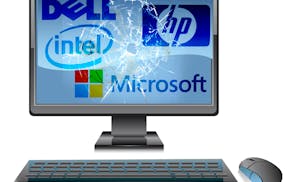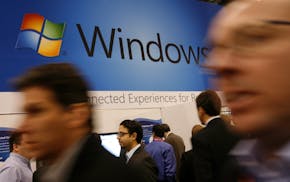Q: I've had my Gateway desktop PC, model GT5620, for six or seven years. I noticed a few days ago that the screen was displaying the wrong time. When I clicked on it, it showed that the year was 2006.
I changed the time and date without problems, then ran the Malwarebytes, Norton Internet Security and Windows Defender security programs without finding any problems.
But since then, every time I turn the computer on, the screen shows either the wrong calendar date or the wrong time. Once I correct them, they're OK until I turn off the PC.
I've backed up my files to be safe, but what's causing the problem and what I should I do now?
Andrew Buist, Jacksonville, Fla.
A: An electrical component of your computer is failing, and it's hard to know which one.
It's most likely the CMOS (complementary metal-oxide-semiconductor) battery that supplies a trickle of electricity to maintain the calendar date when the PC is turned off. It can be replaced for about $10 online. To remove it, see tinyurl.com/3s3gd.
But the problem could also be a flaw in the PC's power supply ($50 to $70, if you replace it yourself), a transformer that lowers wall outlet voltage to the level your PC needs. Or it could be caused by a failure in the PC's main circuit board or motherboard ($120 if you do it yourself.)
Rather than replace any or all of those parts on a PC that's six or seven years old, I'd buy a new computer.
Dennis Fazio, a longtime information technology professional, disagrees with some advice I gave about how often to charge a laptop battery to prolong its life. I suggested a laptop owner should try to minimize the number of times the battery is charged by using the battery until it is nearly run down.
But Fazio, technical services director at Falcon Heights educational software firm TIES (Technology Information Education Services), says it's better to charge batteries before they are completely run down.
"For Lithium batteries, each charge cycle reduces its life. Deeper discharges reduce it further than shallow discharges," Fazio said, citing a study (see tinyurl.com/2349lq2).
Q: I have a used PC that several times a day slows down until it is nearly stopped. When I look at the PC's resource monitor, I see several tasks running that are part of my Norton security program. This can go on for as long as 10 to 15 minutes. Then, to make things worse, the Microsoft Security Essentials program sometimes starts running, slowing down the PC again. If both of these programs run in sequence, the PC becomes useless for 20 to 30 minutes at a time. What should I do?
Paul Delau, Minnetonka
A: You're running two security programs at once, and they're competing for the PC's computing capability. Go to the Windows Control Panel, choose "Programs and Features" and uninstall either Norton or Microsoft Security Essentials.
E-mail tech questions to steve.j.alexander@gmail.com or write to Tech Q&A, 425 Portland Av. S., Minneapolis, MN 55488. Include name, city and telephone number.

Alexander: A beeping computer is telling you what's gone wrong inside

Alexander: How to stop deleted iPhone e-mails from coming back

Alexander: Refurbished PCs may need a BIOS update to use new components

Alexander: Windows 11 not always to blame for browser or e-mail problems

